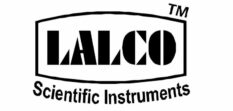
Unveiling the Secrets of the “LALCO” Vacuum Rotary Evaporator
In the realm of chemical and pharmaceutical laboratories, precision and efficiency are paramount. Among the unsung heroes that help achieve these standards is the vacuum rotary evaporator. Though it might not have the same glamour as the microscope or the centrifuge, this versatile piece of equipment is indispensable for many applications. In this blog, we’ll dive deep into what a vacuum rotary evaporator is, how it works, and why it’s crucial for modern research and production.
What Is a “LALCO” Vacuum Rotary Evaporator?
A vacuum rotary evaporator, often simply called a rotovap, is a device used primarily to remove solvents from samples through a process called evaporation. It’s a staple in laboratories that require the purification of compounds, concentration of solutions, or recovery of solvents for reuse. The rotovap is especially valuable in applications where gentle heating is needed to avoid decomposition of heat-sensitive compounds.
How Does a “LALCO” Vacuum Rotary Evaporator Works?
At its core, the vacuum rotary evaporator operates on a combination of reduced pressure and gentle heat. Here’s a breakdown of the process:
- Sample Introduction: The sample containing the solvent is placed in a round-bottom flask, which is then attached to the rotovap.
- Rotation: The flask is mounted on a motorized rotary drive that slowly rotates it. This rotation increases the surface area of the liquid, promoting efficient evaporation.
- Heating: The flask is immersed in a heated water bath (or sometimes an oil bath). The heat gently warms the liquid, facilitating the evaporation process.
- Vacuum: A vacuum pump creates a low-pressure environment around the sample. This reduced pressure lowers the boiling point of the solvent, allowing it to evaporate at a lower temperature. This is particularly useful for solvents with high boiling points or for heat-sensitive substances.
- Condensation: The evaporated solvent vapor is then channeled through a condenser, where it cools down and condenses back into a liquid. This condensed solvent is collected in a separate receiving flask.
Why Use “LALCO” Vacuum Rotary Evaporator?
- Efficiency: By combining rotation and reduced pressure, rotovaps significantly increase the rate of evaporation compared to conventional methods. This is especially beneficial when dealing with large volumes or when time is of the essence.
- Gentle Heating: The ability to evaporate solvents at lower temperatures means that heat-sensitive compounds are less likely to decompose, making the rotovap ideal for delicate substances.
- Solvent Recovery: The design of the rotovap allows for efficient recovery and reuse of solvents, which is not only cost-effective but also environmentally friendly.
- Versatility: Rotovaps are used in various fields, including chemistry, pharmaceuticals, and environmental science. They’re employed in tasks ranging from concentrating plant extracts to purifying chemicals and even in the synthesis of new compounds.
Tips for Optimal Use
- Maintain Proper Vacuum: Ensure the vacuum system is functioning correctly to achieve the desired pressure. A well-maintained vacuum pump is crucial for efficient operation.
- Temperature Control: Monitor and control the temperature of the water or oil bath carefully. Too high a temperature can risk overheating your sample, while too low can slow down the evaporation process.
- Clean Regularly: Residue build-up in the flask or condenser can impede performance and lead to cross-contamination. Regular cleaning ensures the longevity of the equipment and the purity of your samples.
- Safety First: Always handle the rotovap with care. Make sure all connections are secure, and be cautious of hot surfaces and solvents. Proper ventilation is also essential, especially when working with volatile solvents.
In Conclusion
The vacuum rotary evaporator is a fundamental tool in the modern laboratory, offering efficiency, precision, and versatility. Its ability to evaporate solvents under reduced pressure and gentle heat makes it invaluable for researchers and chemists who need to purify, concentrate, or recover substances with minimal risk of degradation. By understanding how to operate and maintain a rotovap effectively.
